Managing Disc Bulge: Effective Strategies for Pain Relief
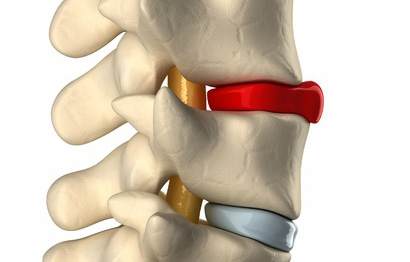
Do you have a disc bulge that is causing you incredible pain in your lower back?
Does your disc bulge give you sciatica or pain down your leg?
Have you wondered what’s going on in your lower back to cause all this pain?
In this issue of Bodi Empowerment, I go over what’s going on with your disc bulge, the cause of your pain and what kind of treatments are best for you. In other words, I act as a guide to help you decide what to do.
Disc herniations, or disc bulges occur when the disc that is found between vertebrae in the spine is damaged. Most of the time the damage occurs in stages.
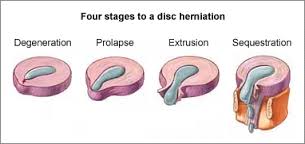
Here are the four stages of a disc herniation or disc bulge:
- Disc Bulge
- Disc Prolapse
- Disc Extrusion
- Disc Sequestration
Think of the disc as a flat hard onion with strawberry jelly inside. The jelly is the nucleus while the onion layers form circular layers of hard cartilage called the annulus.
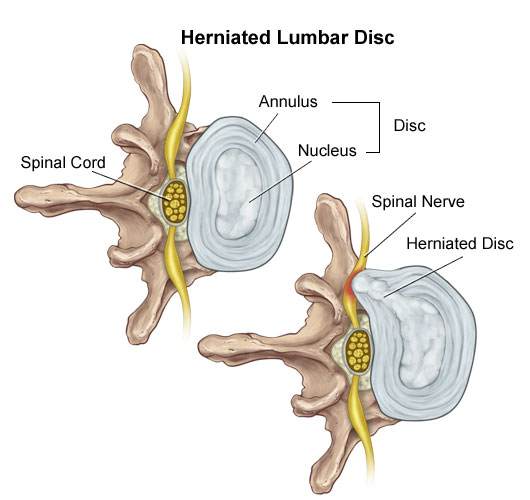
Disc Bulge
If you were to damage the annulus (onion) enough the disc gets to a point that when you bend forward, you pinch the front of the onion so it starts to bulge the onion at the back by pushing the nucleus (jelly) backwards.
This is called a disc bulge. For most of you, there is no pain but for some of you, there can be considerable lower back pain and even sciatica from this small disc bulge.
Disc Protrusion
A disc protrusion is like a disc bulge that comes out even more in one focused spot. The disc pushes out as if you had your finger inside a balloon and pushed out.
Most of the layers of the onion (annulus) have been damaged but the jelly (nucleus) is under considerable pressure. The jelly (nucleus) squeezes through the layers of the annulus (onion) with the few intact layers of the onion (annulus) and the PLL (posterior longitudinal ligament) holding the jelly from spilling out. The disc is still contained by the annulus and PLL ligament. ie the balloon hasn’t popped.
Disc Protrusions usually cause quite a bit of lower back pain and often times sciatica. Many of you, with disc protrusions, on the other hand, have absolutely no pain. There is no clear reason. A study found that 40% of people with no pain whatsoever had disc protrusion confirmed by MRI (Magnetic Resonance Imaging Machine) [1]
The trick is not to let your doctor diagnose you based on just an MRI. An MRI that shows a disc protrusion by itself is not a diagnosis. It’s what a normal person with no pain can have. Make sure there is other evidence!
Disc Extrusion
Disc Extrusion is a disc bulge so large that it breaks through the last layers of the onion (annulus) and the PLL ligament pushing into the area of the spinal cord. ie. The balloon has popped. If you have an extrusion you likely have a tremendous amount of pain leg pain and usually some lower back pain.
Surprisingly when a group of normal people with no pain were scanned with an MRI 18% were found to have disc extrusions (severe disc herniations). [1]
When you have a disc extrusion chances are the extrusion is likely causing your pain as it’s so large.
Disc Sequestration
Disc sequestration occurs when a piece of your jelly (nucleus) that breaks through the onion (annulus) and the PLL ligament has now broken off and moved away further into the spinal cord area. When you have a disc sequestration you have a tremendous amount of leg pain and some lower back pain.
Smaller Is Better: Disc Bulge
Disc Herniations or slipped discs are better if they are smaller, right? You will have less pain right? Yes except when they give you pain. Remember all those normal people with no pain with all kinds of slipped discs? They had disc bulges, disc protrusions, and disc extrusions and even disc sequestrations with no pain.
On the other hand, even with a small disc bulge, you can get a lot of pain and even sciatica with no pressure on the nerve. So smaller isn’t always better.
Bigger Is Better: Disc Bulge
Sometimes bigger is better. Most people like you with disc extrusion and sequestration have lots of pain. The fact is these painful extrusions while more painful usually shrink with time. It takes about a year but with the shrinking of the herniations, the pain does decrease.[2-5]
Disc Herniation: Disc Bulge Treatment
#1 Stop Aggravating Yourself
Half the problem why people don’t get better is that they continually aggravate their lower back and their slipped discs. Learning to lift properly, sit properly and even stand over the sink while brushing your teeth properly can help you avoid the pain.
Even Yoga exercises such as the downward dog can aggravate the lower back, Pilates and even your basic abdominal crunch have been shown by Dr Stuart McGill to increase the pressure in the disc beyond its safe limit.
If you want to find out how to stop aggravating your lower back, click the link below.
See Also: Slipped Discs: Best Self-Treatments To Help Your Lumbar Disc Herniation
#2 Exercise For Disc Herniations / Slipped Discs
For complete instructions on exercises for slipped discs click the link. Best Exercises For Your Slipped Disc
#3 Chiropractic Adjustments For Disc Bulge
A major research paper showed that people who have had lumbar disc herniations who have failed at least 3 months of medical management, including treatment with analgesics, lifestyle modification, physiotherapy, massage therapy, and/or acupuncture, should consider chiropractic spinal manipulative treatment, followed by surgery if unsuccessful. [6]
I would also add that I would try 3 different chiropractors as the competency level varies from person to person. Like any profession including medical doctors and physiotherapists, there are the good ones and bad ones.
See also: 6 Things You Should Look For In A Chiropractic Clinic
#4 Acupuncture For Disc Bulge
Acupuncture is helpful for Slipped Discs in the neck and the lower back.[7-8]
#5 Injections
In a study of two different groups getting treatment for lumbar disc herniations, the group getting chiropractic manipulation had 76.5% of the people improve while the group getting the nerve root injections improved by 62.7%.
After a month, the chiropractic spinal manipulation group had a 60% reduction in pain compared to the nerve root injection group, which had a 53% decrease in pain. Keep in mind the nerve root injection group seemed to be worse to start with compared to the spinal manipulation group.
See Also: Chiropractic Spinal Manipulation Vs. Nerve Root Injections for Lumbar Disc Herniations
Epidural injections are also helpful for lower back pain and the radiating pain down your leg.[8]
#6 Surgery
#1 Discectomy
There are two types of surgery available for slipped discs. Discectomy and spinal fusion. This surgery involves cutting out the piece of the disc that is protruding out and pushing on the spinal cord or nerve.
Discectomy is relatively simple compared to spinal fusion. You have a much better chance of success with discectomy if your MRI shows that your disc herniation is greater than 7 mm thick and correlates well with your neurological exam and nerve conduction studies.[9] If your lower back pain is greater than your leg pain discectomy will not likely work very well for you.[10]
#2 Spinal Fusion
Spinal Fusion removes the disc herniation, jelly (nucleus), and most of the annulus (onion). Bone from the pelvis is then transplanted where your disc was so that the two vertebrae become one.
What Treatment Should You Do?
You should do at least 3 months of therapy when you have a slipped disc before even considering surgery or injections. Start by not aggravating your lumbar disc. You need to modify how you bend forward, lift and even pick up your socks.
See Also: Disc Herniation: Best Self-Treatments To Help Your Lumbar Disc Herniation
If you have trouble sleeping at night you can take painkillers to help you get a better sleep. Don’t stay in bed though. When you have excruciating pain you should only have bed rest for a maximum of two days total.
Next, try chiropractic or physiotherapy with someone who also does acupuncture. Make sure it’s not with somebody who knows how to do 20 acupuncture points. Be patient with them as disc herniations can be difficult to deal with.
Attend regularly 3 times a week for at least a month. Make sure they change the treatments to find what works best for you. If they keep doing the same thing each visit but you are improving that is fine, but if you aren’t improving then it’s time to find a new chiropractor.
If you don’t get any better after a month change to a different chiropractor. I recommend trying 3 different chiropractors as different chiropractors have different training.
If you plateaued or haven’t improved at all then it’s time to get a nerve root injection or an epidural injection. Make sure it’s with a person that does this every day. An emergency room doctor or family physician only does this procedure once in a while. It’s better to get someone more experienced.
When conservative care has been completely exhausted then it’s time to consider surgery. Discectomy is more conservative than spinal fusion and recovery is much quicker. You should consider discectomy surgery if you have :
- Foot drop that is getting worse.
- Any other neurological symptoms that is getting worse like your reflexes, sensitivity
- Bowel or Bladder Symptoms (loss of your poo and pee function). : This is an emergency you should go to the hospital right away.
- If you have a disc protrusion or that is 8 mm or larger that correlates well with a neurological exam, and Nerve conduction tests.
- Leg pain is worse than your lower back pain.
Beware of the surgeon who wants to operate on a small disc bulge. There are too many unnecessary surgeries in the USA especially spinal fusion.
Spinal fusion is considered when your lower back pain is worse than your leg pain
Tell us what you think in the comments below and like us on Facebook. This Toronto Downtown Chiropractor will answer all questions in the comments section.
Research
1. Weishaupt D et al. “MRI of the lumbar spine: Prevalence of intervertebral disc extrusion and sequestration, nerve root compression and plate abnormalities, and osteoarthritis of the fact joints in Asymptomatic Volunteers.” Radiology – 1998; 209:661-666
2. Maigne JY, Rime B, Delignet B. Computed tomographic follow-up of 48 cases of nonoperatively treated lumbar intervertebral disc herniation. Spine 1992; 17:1071-1074.
3. Ikeda T, et al. Pathomechanism of spontaneous regression of the herniated lumbar disc: histologic and immunohistochemical study. J Spinal Disord 1996;9:136-140.
4. Ahn SH, Ahn MW, Byun WM. Effect of transligamentous extension of lumbar disc herniations and their regression in the clinical outcome of sciatica. Spine 2000; 25:475-480.
5. Komori H, Shinomiya K, Nakai O, et al. The natural history of herniated nucleus pulposus with radiculopathy. Spine 1996; 21:225-229.
Research
6. McMorland G et al.Manipulation or microdiskectomy for sciatica? A prospective randomized clinical study. Journal of Manipulative & Physiological Therapeutics 2010; 33: 576-584.
7. Wu, Yao-chi, Jun-feng Zhang, Yi-jun Sun, Cheng-fei Huang, Ping Shao, and Gui-zhen Liu. “Clinical study on electroacupuncture for cervical intervertebral disc herniation.” Journal of Acupuncture and Tuina Science 11, no. 6 (2013): 371-374. – See more at: http://www.healthcmi.com/Acupuncture-Continuing-Education-News/1249-acupuncture-found-superior-to-drug-for-neck-disc-pain#sthash.vD0pNepM.dpuf
8. Wang HeshanNon-Surgical Therapy For Prolapse of Lumbar Intervertebral Disc. The Journal of Traditional Chinese Medicine
9. Parr AT, Diwan S, Abdi S. Lumbar interlaminar epidural injections in managing chronic low back pain and lower extremity pain: a systematic review. Pain Physician 2009;12:163-188.
Research
10. Carragee EJ, et al “Clinical outcomes after lumbar discectomy for sciatica: The effects of fragment types and annular competence” J Bone Joint Surg Am – 2003; 85(1):102-108
11. McMorland G et al.Manipulation or microdiskectomy for sciatica? A prospective randomized clinical study. Journal of Manipulative & Physiological Therapeutics 2010; 33: 576-584.
Related Categories: Acupuncture, Back Pain, Disc Herniation, Imaging, Low Back Pain, Surgery

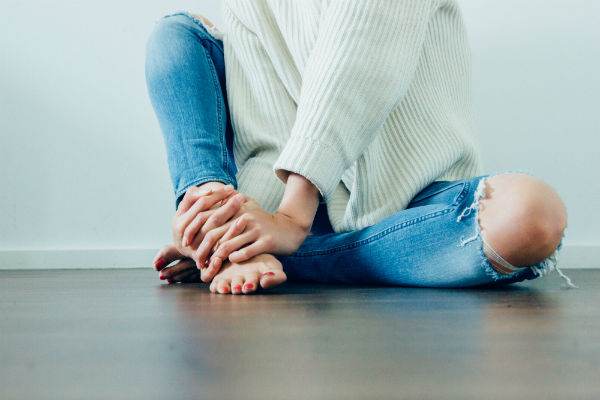
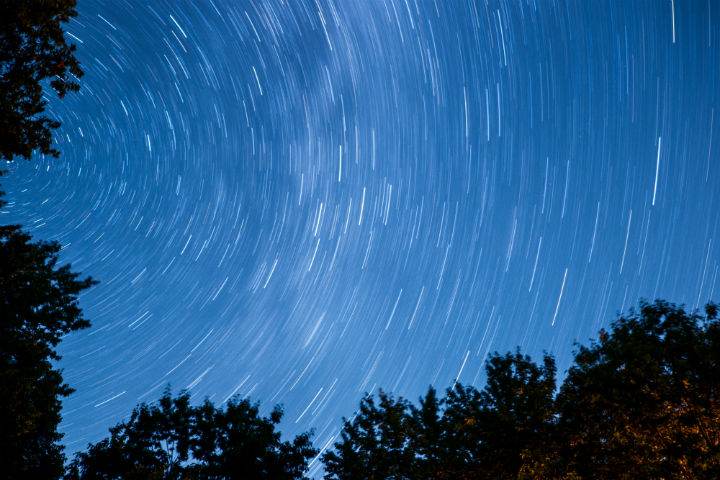
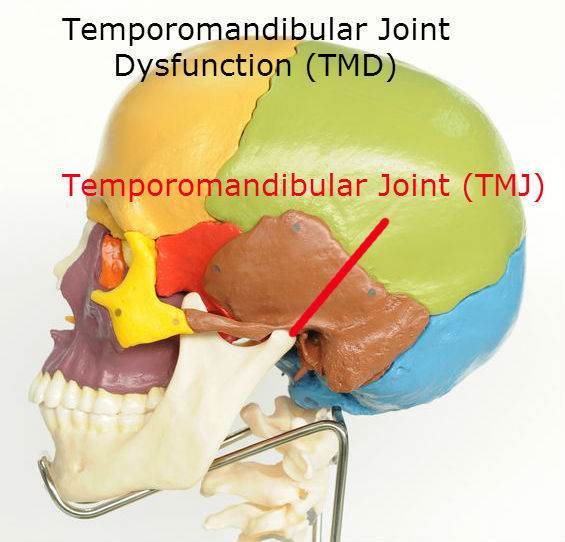
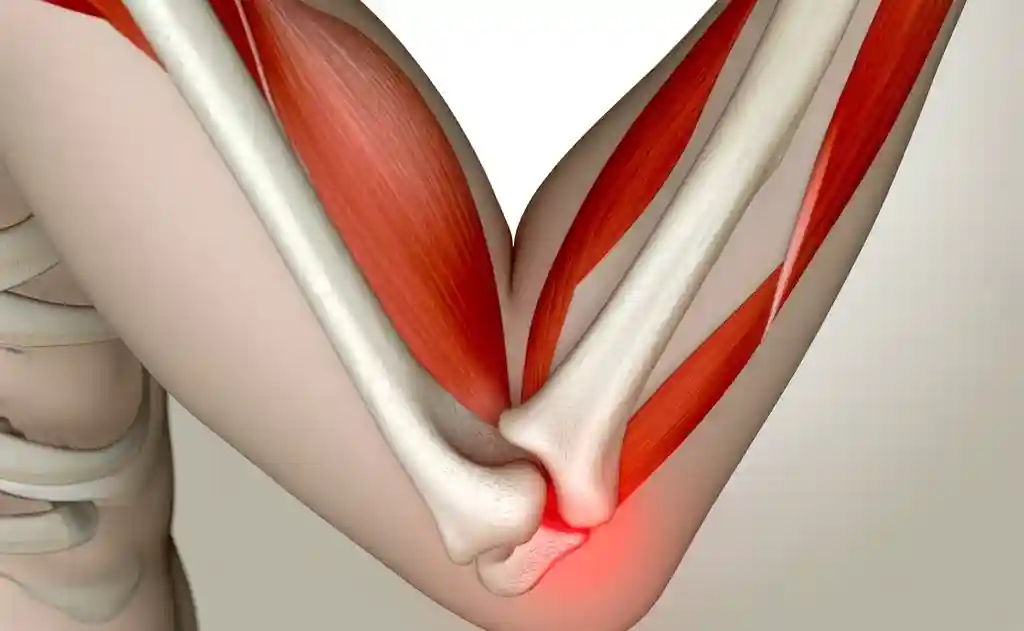
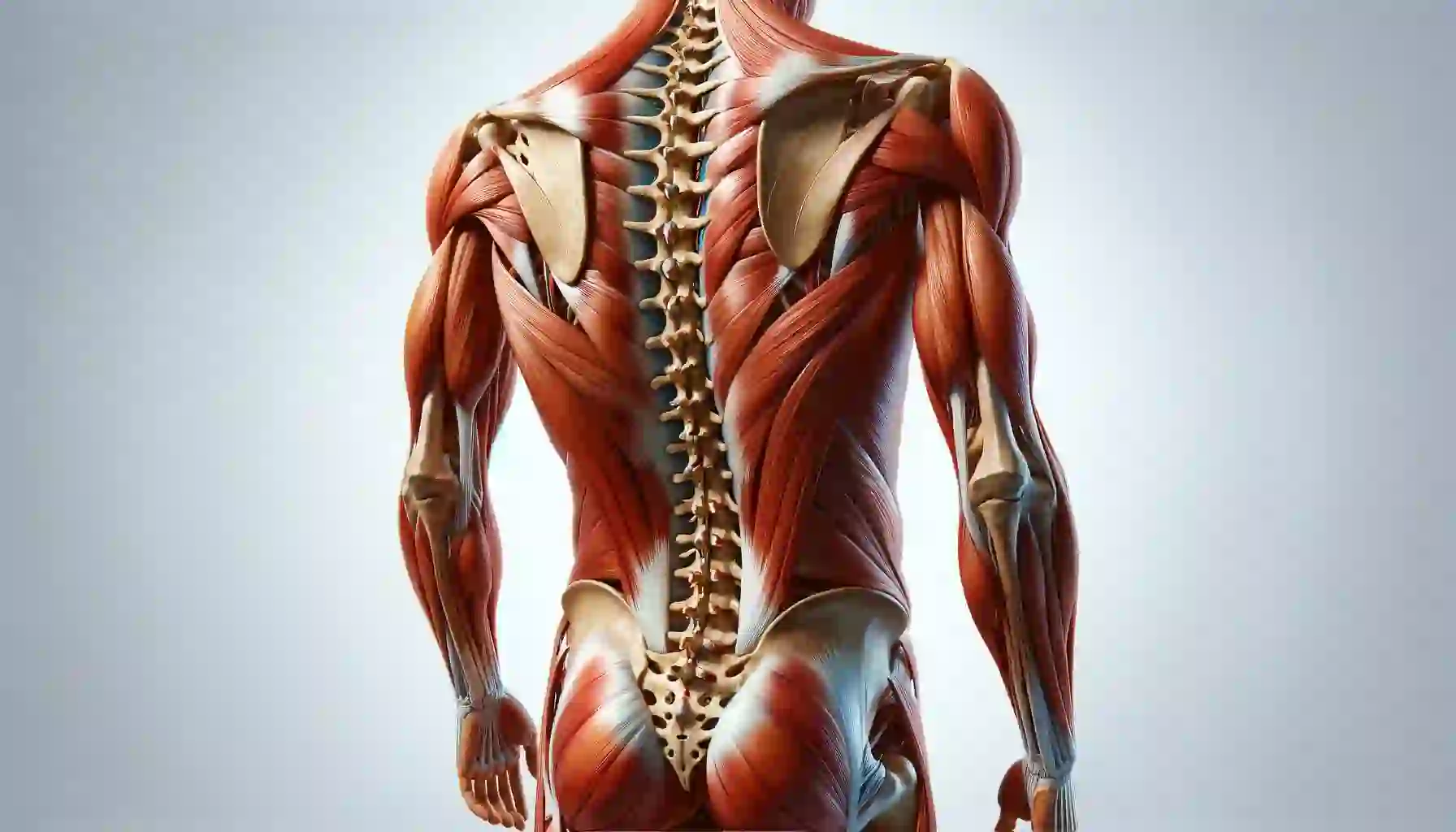


Hi doc.. ken first I really wanna appreciates u. U helping people so nicely u r such nice person.. doc I am from india 45 yrs old female. I am suffering from lower back pain from long time its been year suffering from dis I had MRI and the reports are: findings are- curvature of the lumbar appears straightened with transitional vertebra at lumbo-sacral junction with rudimentary l5-s1 disc. Vertebral bodies show normal height and MR signal morphology. L3-4 and l4-5 discs shows subnormal signals on t2 weighted images s/o. Dehydration/ dessication.. L1- 2 and l2-3 discs appear essentially normal. L3-4and l4-5 discs show diffuse annular bulges with left forminal /far lateral disc extrusion causing narrowing of left neural canal and compression of left exiting nerve roots. Visualised terminal cord and conus medullaris appear essentially normal. Pre and paravertebral soft tissues appear normal. Lumbar canal diameters are normal. IMPRESSION:- ABOVE findings are likekly due to diffuse annular bulges at l3-4 and l4-5 levels with left foraminal/ far lateral disc extrusion causing narrowing of left neural canal and compression of left exiting nerve root. doc these are my MRI REPORTS plzz suggest me what should I do and how can I cure it .
Author
Thanks for your question Usha. Sounds like you have a lateral disc herniation. You should first start out by doing these exercises. https://www.bodiempowerment.com/herniated-disc-part-2-the-best-exercises-for-your-herniated-disc/
You may get worse or better with these exercises. Every case is unique and for the most part a lateral disc herniation can respond to these exercises or sometime other exercises.
Try the exercises above first and we’ll see. Also the transitional exercises puts more pressure on the L45 and the L5S1 is fused together. This is a normal result for people with a transitional segment.
Hope that helps.
Hello Doctor Ken…I am 29 years old and suffering from Degenerative disc,that happened on 25th Sep 2013.After that my doctor put me on steroids(Medrol) for 1 month and painkiller(Ultracet) for 6 months
From that time to till date I am doing Mckenzie,Cat-Camel and Bird-Dog Exercises daily.But still little pain persists .Also ,Doctor told me not to ride bike(Motorcycle,That’s we call in india).But i want to ride bike.So please suggest me if i can do it by wearing any lumbar support belt or not.
This is what my MRI report Says:
Imaging sequence:
Sagittal and axial T1W,T2W
Coronal STIR
Observations:
Normal ,smooth lordosis of lumbosacral spinal column is maintained.Size,alignment and marrow-signals of lumbar as well as upper sacral vertibrae are normal.L4-5 disc shows degenerative disc changes with minor posterocentral disc protrusion in denting the thecal sac and bilateral L5 nerve roots.Bony lumbar canal size is good.Conus medullaris and roots of cauda equina do not have any intrinsic lesions or focal extrinsic compressions. Mild facetal hypertrophy noted involving L3-4 and L4-5 levels.Sacro-illiac joints are normal .Para spinal muscles and soft tissues do not show any specific structural abnormalities
Thanks in advance
Author
Thanks for your question Sumit. If your pain is coming from your degeneartive disc disease that eventually caused a disc herniation than you should try these exercises.
https://www.bodiempowerment.com/herniated-disc-part-2-the-best-exercises-for-your-herniated-disc/
This is still questionable though.
If you keep the arch in your back then riding your bike/motorcycle is fine.
Hope that helps your possible disc herniation.
Hi…
I am 24 yes old.four days back I got a leg pain and I went to hospital and Dr gave me medicine for 3 days but suddenly next day morning I got back pain.later Dr asked me to take MRI and it is written as
“Diffuse disc bulge causing no significant thecal sac compression
Focal central protruded disc causing indentation of thecal sac.
Dr asked me to take medicine and complete bed rest for 2 weeks.BT am having severe back pain and leg pain.how much time it will take to cure?after cure it will come back or not?am just married and not having children’s.in future did it will make any problems?what should I do for complete cure?
Author
Thanks for your question Ginu. You sound extremely worried. First you can eventually get rid of the pain in the vast majority of cases. It doesn’t mean you are cured though. It means the disc is back in place but can go out again when you strain your lower back.
Second complete bed rest is completely wrong. You need a new doctor as he or she is not up to date. That makes your doctor 20 if not 30 years out of date. You get more harm with complete bed rest. As it is you will have a terrible time when you stand up now from the now huge disc which will put even more pressure on the nerve and make the leg pain even worse. No study I am aware of has said bed rest is good. All of them say no bed rest. 2 days of bed rest at maximum and only in the most severe cases.
How much time will it take to cure? That depends on you. If you are diligent with the exercises it may be short. If you don’t do these exercises it may take many months some people take a year. https://www.bodiempowerment.com/herniated-disc-part-2-the-best-exercises-for-your-herniated-disc/
If the exercises don’t improve the pain or increase the symptoms including numbness tingling or pain further down the leg than you are making yourself worse so you will have to stop the exercises.
Hope that helps your disc herniation.
Many thanks for your reply it is very much appreciated. I already do all of these exercises as given to me by the Physio and the chiropractor. When I see the consultant I will indeed mention to him your comments and I in return will let you know how I get on. Many thanks again.
Author
You are welcome Debbie.
Hi I have had lower back pain for 14 months.mhad MRI in October last year which shows that I have marked degenerative inflammatory discitis at L5/S1 with end plate oedema but no erosion and no paravertebral oedema, a small posterior central/right posterolateral protrusion of the L5/S1 disc, but no nerve root compromise. Also minimal posterior central disc bulges at T11/12, T12/L1 and L1/2 but the canal is generous in these are of no clinical relevance. All my pain is in my lower back slightly to the right this can be excruciating when sat for too long (I work in an office) and trying to get up from my sofa I get this sharp excrutiating pain as stated on the right. When I walk if the ground is uneven it feels like bone on bone which is painful and frightening. I am unable to wash and dress myself as I am unable to bend. I take tramadol for the pain, amytriptiline for the muscles. Ice and heat . Have done Physio and have been seeing. Chiropractor for 9 months every week. Please can you help as I have been in pain every day for 14 months. I am due to see a consultant this week and would like to know what he may offer me. Many thanks in advance.
Author
Thanks for your question Debbie. There are few things you can do.
1. You try these exercises. https://www.bodiempowerment.com/herniated-disc-part-2-the-best-exercises-for-your-herniated-disc/
If the exercises increase the pain or increase any symptoms further down the leg than you should stop.
2. You should try a different physio or chioppractor.
3. You are likely a candidate for 100 days of Bioclavid an antibiotic for the disc if the discitis is related to infection. You would see what is called Modic Yype 1 changes on MRI along with edema of the vertebrae. You cannot detect the infection by blood tests or any other way at all. There are significant number of people with infection in their disc once it degenerates and cause disc herniations.
You should inform your doctor about this. It’s impossible for doctors to keep up with all of the latest information. If the doctor is not willing to at least listen than I would get another doctor if I were in your shoes.
Hope that helps.
hi
I am 30 yr old. now I am worikin in south korea using belt. I am suffering sciatica with disc bulging at l4 and l5 since 20 months. I have been going hospital for physiotherapy twice a week. now I am taking rest for one month. now my paining has reached till my hip and I am taking medicine since 18 months . what should i do to remove sciatica and disc bulge . now I am planning for accupunture. plz suggest me .
Author
Thanks for your question Devid. You have been suffering for a long time. I am not sure if you are saying that you are getting worse or better not that the pain is in your hip. I am assuming that you are getting worse. Sounds to me that you are aggravating your lower back all the time. The first thing to do is stop aggravating your lower back. Read this article.
https://www.bodiempowerment.com/disc-herniation-part-1/
Then try these exercises. https://www.bodiempowerment.com/herniated-disc-part-2-the-best-exercises-for-your-herniated-disc/
If the exercises give you increased pain or increase symptoms further down the leg than you should stop.
Dear Doctor,
My name is ANIL THAKUR from India age 38 I m doing weight exercise since 18 years, near about 8 years back I had a sever pain on my lower back while doing exercise standing side arm rateral (dumbles weight 5+5) it was soo sever that I immediately kept the dumbles and lied on floor and after taking some rest I went direct to near by orthopedic doctor after examine he just told that it was muscular pain and prescribed me a pain killer after taking pain killers 2-3 days everything got all right and I again started my workout with same weight and exercise, till now the same pain occures sometimes only in a gap of 4-5 months but was mild and bearable whenever this things happen I use to take pain killers and everything goes alright, but in last two months I suffered from this pain twice but was bearable I was worried and went to orthopedic doctor he suggested me for MRI and found Posterior disc bulging is seen at l4-l5 and l5-s1 level with facetal hypertrophy causing indentation over the cal sac and exiting nerve root. Second thing found was posterior disc protrusion with annular tear is seen at l3-l4 level causing indentation over thecal sac without compressive elements. Plz help me weather it is curable or not my doctor told me to leave weight exercises, will I ever be able to do weight exercise. I can’t stay without gym. Plz plz plz help me…
Author
Thanks for your question Anil. Thanks for all the pleases. One or three pleases, you still get your question answered. Try these exercises https://www.bodiempowerment.com/herniated-disc-part-2-the-best-exercises-for-your-herniated-disc/
You ask if it is curable. It depends on what you mean is curable. First many people have no pain but many disc herniations. We know this as they did MRI on people with no pain and found that 30% of 30 year olds had disc herniations. So your disc herniations may or may not be causing your pain. Discs by the time you are 20 have no direct blood flow to the center of the disc. This means it can’t really repair itself.
The pain will go away again I am quite of that based on your history. Whether you lift weights or not your pain will likely come back again if it is from the disc herniations. So yes you can be cured of pain for a period of time but it will come back. You should avoid deadlifts, powercleans, and heavy squats. Doing squats improperly whatever the weight will cause problems. It doesn’t matter how long you have been doing it. It matters how well you do it. If you are unsure you shouldn’t do squats.
Hope that helps your disc herniation.
Dear Doctor
Thanks a lot for your quick response and valuable suggestions I am quit confident that this exercises will definitely work on me and will be helpful to make me free from disc herniation.
Sir I have some doubt like
1. How many time in a day i have to perform the exercises suggested by u.
2. How much weight should I lift in seating, lying, standing positions and lift on above shoulder.
3. Can I do crunches, all type of leg raise, side twist, side bend exercises etc.
4. Can I do cardio exercises like running, skipping etc.
Author
Thanks for your question Anil. I think there is some language barriers as you say you are quite confident that the exercises will work but you have some doubts. I think you mean you have some questions.
1. You should do the exercises four times a day.
2. I don’t understand your question.
3. Don’t do crunches, leg raises side twist and I don’t know which side bending exercises you are referring to.
I think you need to change your mentality. You need to get better before you back to your weight lifting etc… I wouldn’t do # 2 or #3 for now.
4. You can do swimming or cycling if you keep the arch in your back. You shouldn’t skip or run. You need to get better. Like I said you need to change your mentality. If you want to get better fast don’t do #2,3,4.
Hope that helps your disc herniation.
Thank you very much Doctor,
Right from this movement I will be not doing weight exercise any more till I get healed from disc herniation.
Also I will keep you updating my progress.
Author
Sounds great Anil. I hope you get better soon.
Dear doctor.
Please can you advise. I had unbearable lower back pains that came in spasms.I had an MRI done that on the L5S1 there is loss of disc height dueto disc desiccation. A smal central disc herniation is present, that is extending towards the recesses abutting both nerve roots..
They results concluded a broad based disc bulge is present L5-S1 level which is extending towards the neural foraminal recesses and is abutting the roots. There are so many exercises on the net for this condition but I am not sure which is more specific to my condition.
Please help.
Author
Thanks for your question. Why don’t you try these exercises.
https://www.bodiempowerment.com/herniated-disc-part-2-the-best-exercises-for-your-herniated-disc/
If the exercises give you increased pain or increased symptoms like numbness, tingling etc…down further like your buttock, thigh or leg then the exercises are not for you.
Hope that helps your possible disc herniation at L5S1
Thanks Doctor for your suggestions. I just wanted to let you know that I do not have pain in my lower back. Pain started from left knee and then travelled up to left hip and now I have pain in the left side calf muscle.
Please suggest. I’ll do the exercise that you recommended.
Thanks again
Sanjeev
Author
Thanks for your questions Sanjeev. Without examining you it is difficult to say what the diagnosis is. It can be a disc problem, knee problem or hip problem, sometimes even flat feet will cause all these problems. I recommend that you find yourself a good doctor to diagnose you.
Hope that helps.
I am in lot of pain and it started witth my left knee. Then it moved up towards teh hip and now towards the cal muscle. Only on my left side. I am in lot of pain – if I am walking it’s okay but sitting for long hours or lying down and chanfing my posture after a long tiem creates unberable pain. Also i can not put my weight on left leg. Following is my report. Can you suggest next step or exercizes please. Want to avoid any surgery.
here’s the finding of my mri report for your reference Doctor
Lumbar lordosis is straightened.
Spondylotic changes are seen in the form of osteophytes at multiple levels with disc dessication at multiple levels.
Rest of vertebral bodies are normal in height, alignment and marrow signal intensity. Posterior spinal elements are normal.
Left paracentral disc protrusion is seen at L4-5 level indenting anterior thecal sac effacing left lateral recesses and compressing left neural foramina leading to secondary canal stenosis. AP canal diameter – 1.1 cm.
Central disc bulge is seen in L5-S1 level indenting anterior thecal sac effacing bilateral lateral recesses and compressing bilateral neural foramina. AP canal diameter – 1.3 cm.
Bilateral facetal arthropathy is seen at L4-5 and L5-S1 levels.
Rest of bony canal is capacious at all levels.
Distal cord and conus medullaris region appear normal in MR morphology.
Pre and paravertebral soft tissues are normal.
Please suggest and help.
Author
Thanks for your question Sanjeev. Exercises may or may not be enough with the two levels of pressure on the nerve. However you can still try which I always recommend. Try these exercises https://www.bodiempowerment.com/herniated-disc-part-2-the-best-exercises-for-your-herniated-disc/
You should not do the exercises if they increase your pain or make the pain go further down the leg.
Hope that helps your disc herniations.
Hello Dr. Nakamura,
There is a lot of information on the web, but I am most grateful to have found this site! There are so many sites out there that say “this is the answer for your problem”! You let us know that there are a lot of unique situations based upon individuals, and these different individuals and situations respond to differently to various treatments.
Anyway, I will make this as brief as possible. I have a desk job of 25 years, and have never practiced good posture or lifting. Following some yard work (heavy lifting) 4 months ago, I developed sciatica. With no improvement, I had an MRI done that shows a L5-S1 right paracentral disc extrusion measuring 1.6 x 1.4 x 1.0 cm.
I am very encouraged with the information on your site regarding disc herniation here: https://www.bodiempowerment.com/disc-herniation-part-1/
I am also practicing the exercises to push the herniated disc back into place as well as the preventative exercises found here: https://www.bodiempowerment.com/herniated-disc-part-2-the-best-exercises-for-your-herniated-disc/
I can deal with the pain, this is not my ultimate concern. Here is my problem: in 10-weeks from now, I will no longer have my current “desk job”. I will need to be on the move everyday as a service company. I will be required to handle a concrete saw weighing about 13 kg. I will be bent over sawing sidewalks (10% of day) and will have to occasionally move barrels (200 L) of material weighing 200 kg with a dolly.
What is my best (most certain) option to ensure I am healthy to perform these tasks? I am scheduled to speak with a few surgeons, but I would much rather go a natural healing route if there is hope for me there. I just want to do my best to minimize my risk of injury (or further injury) in the spring/summer that renders me unable to work at all. I know you cant rush the human body, but I have 10 weeks to give this my best shot. I am ready to do most anything including surgery.
Thank you for any time/consideration you give my case!
Author
Thanks for your question Mike. Thanks for your questions Mike. Sounds like a big problem. You need to push the disc back in but you also need to stabilize your spine with these exercises. https://www.bodiempowerment.com/part-2-degenerative-disc-disease-exercises-help-lower-back-pain-spondylosis/
However while lifting and bending you can still put out your disc. You should do the exercises indefinitely unless you get increased pain from the exercises right after or the symptoms go further down the leg.
Hope that helps your sciatica and disc extrusion.
Hi Dr ken
Following a recent MRI scan it has come up with the following problem.
Disk desiccation and posterior prolapse at l4-l5 severely compressing the descending right l5 nerve root and also mildly impinging upon the descending left l5 nerve roots.
Mild disc prolapse at l5-s1 mildly impinging on the descending s1 nerve roots.
Zero spinal stenosis or thecal sac impingement or compression. No significant bony paravertable soft tissue abnormality.
I am currently waiting to see a specialist and was hoping you could point me to some exercises I could be doing in the meantime and perhaps explain more plainly what the above means. I have been suffering with sciatica for about 6 months now with great pain all down thga right side of the buttock and leg and is now starting to spread to my calf muscle and pins and needles in my right foot currently also having to take strong pain killers.
I would really appreciate any input
Kind regards
Paul
Author
Thanks for your question Paul. The above report of your MRI basically says that you have you have a disc herniation that is severely pushing on the L5 nerve. That is the one that is most likely causing your pain.
You should try these exercises. https://www.bodiempowerment.com/herniated-disc-part-2-the-best-exercises-for-your-herniated-disc/
However you should be careful as these exercises can make you worse, even seriously worse.
If the exercises give you more pain or make the pain, numbness or tingling etc.. go further into the foot you should stop.
Hope that helps your prolapse of L4-L5 disc.
Dear Dr. Ken:
My name is Bhupinder Singh. I m 33 yrs male. From Bombay India. I hv a back pain problem from past 12 yrs. And i hv under went a MLD surgery in year 2010. And now again my back pain had started from last 15 days and i hv done a recent MRI findings are below.
IMPRESSION:
Non visualisation of the lamina at L4-L5 level —post operative status.
Disc desiccation, mild posterocentral and right paracentral disc bulge at L4-L5 level indenting the the cal sac, abutting traversing nerve roots, encroaching right neural foramina and indenting right nerve roots.
Disc desiccation, mild posterior disc bulge indenting the thecal sac at L3-L4 levels and abutting the traversing nerve roots.
Based on above findings orthopedic surgeon had adviced me mini TILF L4-L5 surgery.
I would highly appreciate if u can give me your opinion on above MRI findings.
Thanks & regards,
Sodhi Bhupinder Singh.
Author
Thanks for your question Sodhi. I think you should run from this surgeon. Unless you are having worsening neurological such as bowel and bladder problems, worsening neurological symptoms such drop foot or weaker calves than you should not be getting surgery until you have done the following. Trying conservative therapy is almost always the way to go. This means exercises first followed by injections followed by exercises. If that doesn’t help you might look at surgery.
Also surgery should not be recommended for someone with no radicular symptoms (pain down the leg)
I may be wrong but I think your surgeon is looking at your back with Rupees in his eyes. TILF is the most invasive and most expensive surgery. Also you should know with this surgery will definitely cause you severe degeneration at L5S1 and L34 if they fuse L45 within 10 years. The severe degeneration will eventually lead to stenosis.
Proper protocol should be followed. There are indications for surgery
You should try these exercises. https://www.bodiempowerment.com/herniated-disc-part-2-the-best-exercises-for-your-herniated-disc/
Hope that helps your disc bulge.
Valuable information. Lucky me I found your web site by accident, and I’m shocked why this accident did not happened earlier! I bookmarked it.
Author
Thanks for your comment Zula. Glad it’s helpful. Here’s a link to an article you might find helpful. https://www.bodiempowerment.com/herniated-disc-part-2-the-best-exercises-for-your-herniated-disc/
Hope you that helps your disc herniation.
Good Morning doctor Ken, hope you are doing good. My physio therapist identified the source of radiating pain down my buttock and legs to piriformis syndrome and not due to disc herniation as my MRI suggested. For the last one and a half months I have been doing stretching and strengthening exercises as suggested by my physiotherapist (all exercises are almost similar to your’s) for herniated discs as well as piriformis syndrome, along with that I have also been doing your glute strengthening exercises. I was showing slow progress but for some reason the muscle stiffness in my gluteal area was flaring up even though I did exercises regularly.
I had an appointment with another physiotherapist who after examining me said my body posture is more tilted towards my right ( When I stand in front of the mirror my right shoulder is about an 1/2 to 1 inch lower than my left shoulder which is elevated and all my weight is distributed on my right side ) hence more stress on my right which causes pain in my right leg muscles. He has asked me to do a set of exercises to correct my posture ( mostly related to spine rotation and abdomen ). He said to do them for 15 days to see the difference and then he asked me to continue my daily exercises from there. He said if the posture is corrected then other things would get sorted out. Is this sort of minor scoliosis ? Would correcting this posture help in healing sciatic and glute muscle pain ? Need your valuable advice and suggestion on this.
Thanks & Regards,
Balaji.K
Author
Thanks for your question Balaji. The question is whether it is the disc or piriformis syndrome that caused the posture problem or the other way around. Correcting the posture sometimes helps but treating the cause of the problem is usually more effective from my point of view.
I can’t tell if there is a scoliosis without examining you. Most of the time it is due to the disc as piriformis syndrome won’t cause a shift in posture. Piriformis will only cause the leg to turn out while it is straight.
Good luck with your disc herniation or piriformis syndrome.
Hello Doctor,
I’m Jaya from Chennai, India. I had messaged in this page on September 15, 2014. I had disc bulge L5/S1, you gave me advice and asked me to do one exercise. I did that and my pain started to decrease and now I’m completely recovered. Thanks a ton Doctor! I went to doctors, physiotherapists but didnt work. Just that exercise worked for me and im so happy to be normal again. I’m planning to lose weight, can you advise me on what all gym equipments i can operate and can i do cardio workouts like Spring Fling 2? Thanks Doctor.
Cheers,
Jaya
Author
Thanks for your appreciation Jaya. I am sorry that your medical doctor and physiotherapist could not help.
First just do do light weights. If you don’t have someone showing you how to do things properly you should avoid squats and deadlifts as they are the number 1 and number 2 reason people come to see after going to the gym. The ab exercises like crunches and sit-up should be avoided as they are known to herniate lumbar discs. Otherwise most other exercises are fine.
Hope that helps your L5S1 disc herniation.
Dear doctor Ken,
I am 26 years old, it has been two months i have got a kind sensation in my leg and foot(some parts fall asleep). Compare to first days now i feel much better but still i have the problem. I did MRI test it says: Parasthesia, low back pain radiating to left lower leg and foot. Impression: MRI study of the lumbar spine shows mild diffuse annular buldge of L5-S1 disc with no pressure effect of the thecal sac or foraminal compromise. Rest of the disc have normal apperance. I would really appreciate if you could advice me.
Author
Thanks for your question Nazeer. I would read two articles.
1. To help you stop aggravating your lower back. https://www.bodiempowerment.com/disc-herniation-part-1/
2. Exercises for your disc herniation. https://www.bodiempowerment.com/herniated-disc-part-2-the-best-exercises-for-your-herniated-disc/
Hope that helps your disc herniation.
Thank you doctor for your advice. I shall follow the same and keep you updated on my progress. Thanks again.
Author
You are Welcome Balaji.
Good Morning doctor Ken. I have been following your advice on exercises for my disc extrusion and sciatica. I got myself examined by a physio therapist and he said i also have a stiff piriformis which is the main cause of my sciatica. He did trigger points release for my abdomen, ITB and piriformis and added few more stretching and strengthening exercises to do along your exercises.
Now I am facing a new problem, I have sinus problem that makes me sneeze frequently however the early morning sneezes that i do before getting off from the bed or just after getting off from the bed is triggering a severe pain in my lower back that lasts for a complete day and makes me immobilized. However not all sneezes is creating this problem, example out of 50 sneezes i do a week only 2-3 early morning sneezes is triggering this pain and I am experiencing this only for the last one month, getting affected at least once a week by this. If i brace my abdomen and buttock during the day the impact of sneezing is very minimal but even after bracing the odd early morning sneeze is giving me trouble otherwise i feel i am improving on my sciatica.
Is there anything i can do to minimize this impact ? Could you please provide me your advice on this.
Thanks & Regards.
Balaji.K
Author
Thanks for your question Balaji. First an you need to go face down first thing in morning and lie there for a minute. After that do two sets of cobra then get up. You should do this before getting out of bed. The disc are larger as they absorb (imbibe) water. With a bigger disc the spine is stiffer and there is more pressure in the disc to push on the nerve.
Second you should get your sinus problem treated by an medical doctor, chinese TCM doctor or naturopath. I would opt for the later two.
Hope that helps your lower back disc extrusion.
Hope the exercises help your disc extrusion.
Dear Doctor,
I have a couple of questions on my MRI results: Disc bulge at T11 and T12 most prominent in midline and causes compression of anterior sac with effacement of CSF. How serious is the effacement of CSF?
Second question, There is an abnormal signal in L1 Vertebrae, dark on T1 and becomes bright on T2 and star images. This is listed as being in bone marrow.
I have been scheduled for bone scan, do you know anything about this?
Author
Thanks for your question Kate. Effacement from a disc bulge means your disc is coming out quite a bit. The bulge is coming out enough to touch the sac or tube that hold the spinal cord. The spinal cord itself is surrounded by CSF (cerobro spinal fluid) which is held in a sac or tube called the thecal sac.
T2 is a type of MRI that shows water content in the body. Since there is more water (blood has lots of water in it) in vetebrae it will show up bright on a T2 image. While you should wait for results it can be something more common like a hemangioma which is usually quite a benign condition.
I think you are quite stressed about this as anybody would be so I am simply trying to reassure you that it can be something quite benign. Time will tell. The bone scan is to see if it is very active or not.
Most of the times if it is a hemangioma it is an incidental finding and basically ignored once they confirm what it is. Like most moles on your skin are nothing to worry about.
Hope that helps your disc bulge and reassures you a bit.